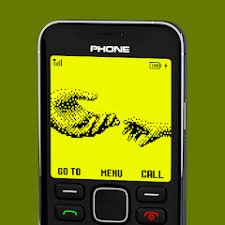Introduction
Nokia, a name that has resonated through the history of mobile technology, remains an iconic brand that has undergone significant transformations over the years. From being the undisputed leader in the mobile phone industry to facing challenges, Nokia has proven to be a resilient and adaptive player in the ever-evolving world of mobile phones. In this article, we explore the journey of Nokia mobile phones, their historical significance, and their place in the modern smartphone landscape.
The Rise of Nokia Mobile
Nokia’s journey in the mobile phone industry began in the early 1980s when they were still primarily known for manufacturing rubber boots and paper products. However, their venture into telecommunications soon gained momentum, and they introduced the Mobira Talkman in 1984, a bulky mobile phone that marked the start of their mobile journey.
Nokia quickly evolved and played a pivotal role in developing the GSM (Global System for Mobile Communications) standard, which set the foundation for the modern cellular network. This early leadership helped Nokia become the leading mobile phone manufacturer in the late 1990s and early 2000s, with iconic models like the Nokia 3310 and Nokia 8210 gaining immense popularity.
Resilience in the Face of Challenges
Despite their early success, Nokia faced fierce competition as smartphones emerged. The company initially struggled to adapt, but their decision to adopt the Windows Phone operating system in 2011 proved to be a critical turning point. The Lumia series, powered by Windows, showcased innovation in design and camera technology. While it didn’t regain Nokia’s former market dominance, it demonstrated their resilience and willingness to embrace change.
Nokia’s Journey into the Smartphone EraNokia’s mobile
division was eventually acquired by Microsoft, marking the end of an era. However, in 2016, Nokia reemerged, licensing its name to HMD Global, a Finnish company, to manufacture Nokia-branded smartphones. These new Nokia Android smartphones have aimed to deliver the build quality and design aesthetics that Nokia was known for.
Nokia smartphones have garnered
a dedicated following for their clean, stock Android experience and timely software updates. The brand has also focused on producing durable devices, emphasizing the legendary toughness of Nokia’s early phones.Nokia’s Modern LineupAs of my last knowledge update in January 2022, Nokia’s smartphone lineup included a range of devices catering to various market segments. They offered entry-level smartphones, mid-range devices, and even a few flagship-level models. The Nokia devices were known for their clean and uncluttered user interface, close-to-stock Android experience, and a commitment to regular software updates.In the competitive smartphone market, Nokia focused on key selling points like reliability, security, and affordability. They also continued to emphasize their cameras, echoing their legacy of innovation in mobile photography.
Conclusion
Nokia’s journey in the world of mobile phones is a story of resilience and adaptation. From their early dominance in the feature phone era to their reinvention as a player in the smartphone landscape, Nokia has maintained its legacy as a trusted and durable brand. While the mobile market continues to evolve, Nokia’s commitment to quality, simplicity, and durability ensures that it remains a respected name in the industry. Whether you’re nostalgic for the days of the Nokia 3310 or interested in their modern Android smartphones, Nokia’s enduring presence in the mobile world is a testament to their enduring legacy.




